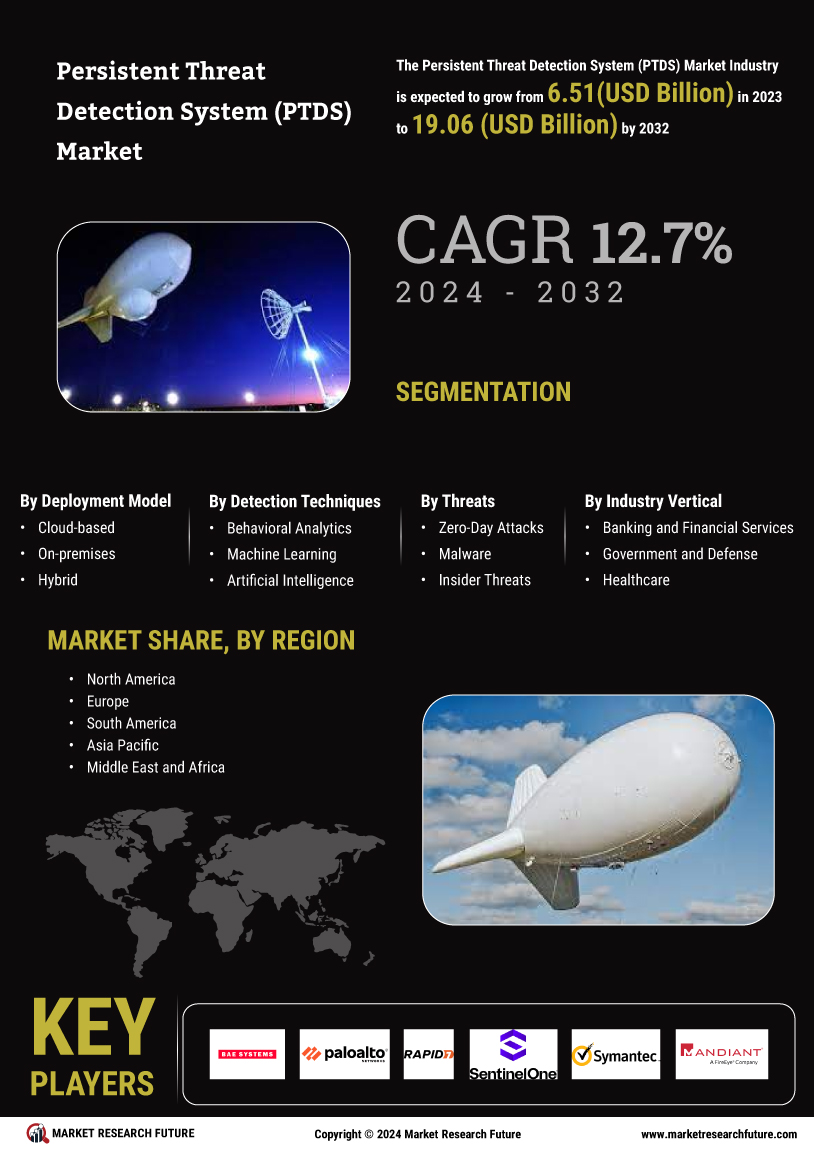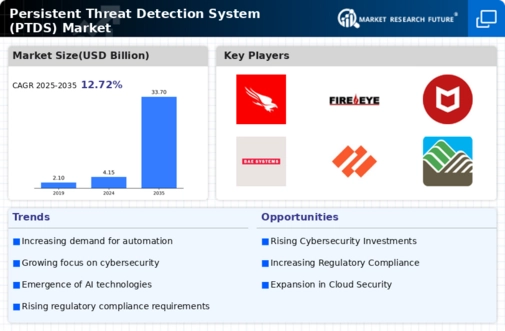Rising Cybersecurity Threats
The Persistent Threat Detection System Market (PTDS) Market is experiencing a surge in demand due to the increasing frequency and sophistication of cyber threats. Organizations are facing a myriad of challenges, including ransomware attacks, data breaches, and advanced persistent threats (APTs). According to recent data, the number of reported cyber incidents has escalated, prompting businesses to invest in robust security measures. This trend indicates a growing recognition of the need for advanced threat detection systems that can proactively identify and mitigate risks. As cybercriminals continue to evolve their tactics, the PTDS Market is likely to expand, driven by the necessity for organizations to safeguard their digital assets and maintain operational integrity.
Adoption of Cloud Technologies
The Persistent Threat Detection System Market (PTDS) Market is witnessing a notable shift towards cloud-based solutions, driven by the increasing adoption of cloud technologies across various sectors. Organizations are migrating their operations to the cloud to enhance flexibility and scalability, but this transition also introduces new security challenges. The need for effective threat detection in cloud environments is paramount, as traditional security measures may not suffice. Consequently, the PTDS Market is adapting to this trend by offering solutions specifically designed for cloud infrastructures. This shift is expected to propel the market forward, as businesses prioritize the integration of advanced threat detection capabilities within their cloud security frameworks.
Increased Regulatory Requirements
The Persistent Threat Detection System Market (PTDS) Market is significantly influenced by the tightening of regulatory frameworks surrounding data protection and cybersecurity. Governments and regulatory bodies are implementing stringent compliance requirements, compelling organizations to adopt advanced security measures. For instance, regulations such as the General Data Protection Regulation (GDPR) and the Health Insurance Portability and Accountability Act (HIPAA) necessitate the deployment of effective threat detection systems. This regulatory landscape creates a pressing need for organizations to invest in PTDS solutions to ensure compliance and avoid hefty penalties. As a result, the PTDS Market is poised for growth, as businesses seek to align their security strategies with evolving legal obligations.
Growing Awareness of Cybersecurity Risks
The Persistent Threat Detection System Market (PTDS) Market is benefiting from a heightened awareness of cybersecurity risks among organizations of all sizes. As high-profile data breaches and cyberattacks dominate headlines, businesses are increasingly recognizing the importance of investing in comprehensive security solutions. This awareness is driving demand for PTDS, as organizations seek to protect sensitive information and maintain customer trust. Furthermore, educational initiatives and industry collaborations are fostering a culture of cybersecurity vigilance, encouraging organizations to adopt proactive measures. The PTDS Market is likely to see sustained growth as this awareness translates into increased investments in advanced threat detection technologies.
Technological Advancements in Threat Detection
The Persistent Threat Detection System Market (PTDS) Market is propelled by rapid technological advancements in threat detection methodologies. Innovations in artificial intelligence, machine learning, and behavioral analytics are enhancing the capabilities of PTDS solutions, enabling them to identify and respond to threats with greater accuracy and speed. These advancements allow organizations to stay ahead of evolving cyber threats, making PTDS an essential component of modern cybersecurity strategies. As technology continues to evolve, the PTDS Market is expected to expand, driven by the demand for cutting-edge solutions that can effectively combat sophisticated cyber threats.


















Leave a Comment